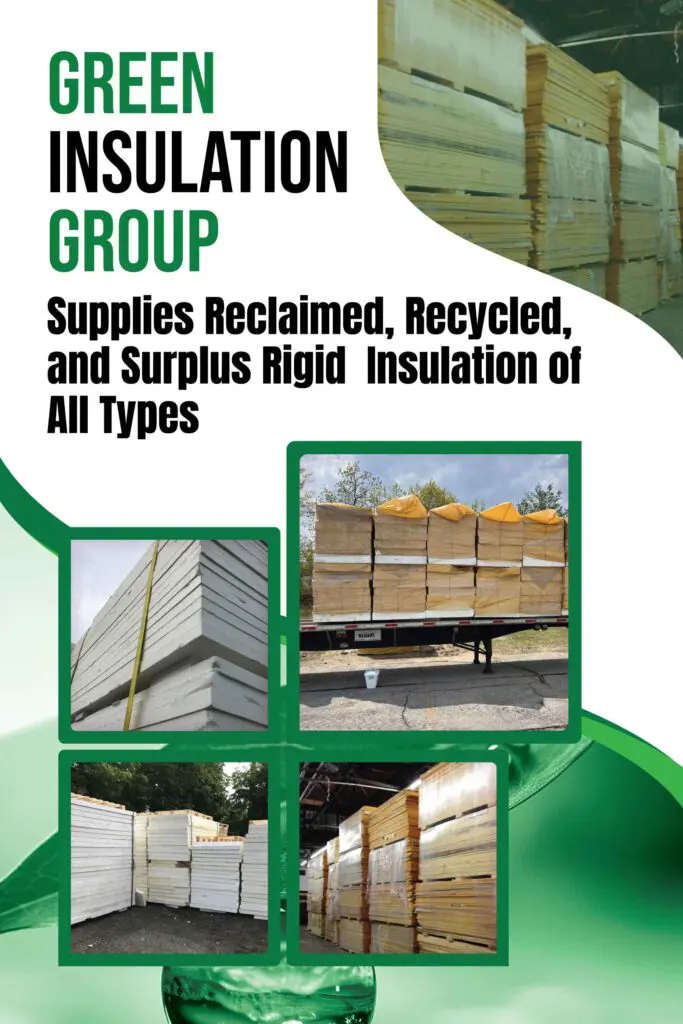
Enhancing Wall Insulation with Reclaimed Polyiso Panels for Cold-Climate Retrofits
Reclaimed polyisocyanurate (polyiso) insulation panels have emerged as a highly effective solution for improving the thermal performance of exterior walls in cold climates. With their high R-value per inch, sustainability benefits, and ease of air-sealing, these panels are an excellent choice for deep energy retrofits. Retrofitting older homes with reclaimed polyiso not only enhances energy efficiency but also reduces heating costs and improves overall building durability. A study by the Building Science Corporation (Ueno, 2010) demonstrates how exterior insulation retrofits using polyiso significantly improve airtightness and insulation levels in older homes.
At Green Insulation, we provide high-quality reclaimed polyiso panels for builders and homeowners looking to enhance their building’s energy efficiency. Contact us today to find cost-effective insulation solutions for your next retrofit project.
Why Choose Reclaimed Polyiso for Exterior Wall Insulation?
Polyiso insulation is known for its exceptional thermal performance, offering an R-value of approximately R-6 to R-7 per inch. This high insulating value makes it particularly advantageous for retrofits where space constraints limit the thickness of additional insulation. Unlike fibrous insulation materials that can be affected by moisture movement, polyiso’s foil-faced surface provides a built-in vapor barrier, preventing condensation issues inside the wall assembly.
Using reclaimed polyiso panels provides further advantages. By repurposing high-performance insulation, reclaimed polyiso reduces material costs and diverts waste from landfills, making it a more sustainable option. Additionally, the foil facing on polyiso allows for easy seam taping, enabling installers to create a continuous air barrier that enhances overall thermal performance.
Case Studies: Polyiso in Cold-Climate Wall Retrofits
A study by the Building Science Corporation examined three deep energy retrofits in Massachusetts, where homes originally built between 1850 and 1930 underwent exterior wall insulation upgrades using reclaimed polyiso panels. These projects focused on improving airtightness, reducing thermal bridging, and increasing insulation levels to between R-35 and R-40.
1915 Concord Four Square Home
One of the case studies featured a 1915 Sears Four Square home, where the original exterior cladding was removed, and two layers of 2-inch reclaimed polyiso were installed. This retrofit significantly improved airtightness while preserving the interior finishes of the home.
1930 Arlington Duplex
A duplex built in the 1930s underwent a similar polyiso-based retrofit, reducing air leakage and enhancing insulation without requiring extensive interior modifications. Careful detailing around windows and doors ensured a well-sealed and insulated exterior.
1850 Bedford Farmhouse
The oldest of the three homes, an 1850 farmhouse, was converted into a high-performance affordable housing unit. Here, polyiso replaced the originally planned housewrap as the primary air barrier, demonstrating its effectiveness in creating a well-sealed thermal envelope.
These projects confirm that reclaimed polyiso can be successfully used in cold-climate retrofits, significantly reducing heat loss and energy consumption.
Airtightness: A Key Factor in Polyiso Retrofits
Achieving airtightness is critical in deep energy retrofits. Without proper air sealing, even high-R-value insulation will not perform effectively. Air leaks allow warm air to escape in winter and infiltrate in summer, leading to increased energy consumption and potential moisture issues.
The foil-faced surface of polyiso makes it particularly effective for air sealing. When seams are taped correctly using high-performance acrylic or butyl sealing tape, the polyiso layer itself becomes an air barrier, reducing heat loss and preventing drafts.
In multi-layer installations, staggering the seams between layers further improves airtightness, ensuring there is no direct airflow path through the insulation. While it is ideal to tape both layers, if only one layer is sealed, the outermost layer should be prioritized to create the most effective air barrier.
A study by the Building Science Corporation (Ueno, 2010) demonstrated the importance of airtight detailing, particularly around windows, doors, and foundation transitions. Airtightness testing showed substantial reductions in air leakage in homes where polyiso was correctly sealed, further confirming its effectiveness.
Best Practices for Installing Reclaimed Polyiso Panels in Exterior Retrofits
Proper installation of reclaimed polyiso panels ensures maximum thermal performance and airtightness. Before beginning, the existing cladding should be removed, and the sheathing inspected for any damage. If necessary, a drainage plane, such as a spun-bonded housewrap, can be installed behind the insulation for additional moisture control.
When applying polyiso panels:
- Use two layers of 2-inch foil-faced polyiso, staggering the seams to prevent thermal bridging.
- Secure panels with oversized washers and mechanical fasteners to ensure a tight fit against the existing structure.
- Tape all seams using high-performance acrylic or butyl sealing tape to create a continuous air barrier.
- Install furring strips over the insulation to create a rain screen and provide a mounting surface for the new cladding.
For windows and doors, precise flashing integration is essential to maintaining the air barrier. Proper detailing ensures that moisture does not become trapped within the wall assembly.
Why Reclaimed Polyiso is a Smart Choice for Cold-Climate Retrofits
Reclaimed polyiso panels provide a high-performance, cost-effective solution for exterior wall retrofits in cold climates. Their high R-value per inch, built-in vapor barrier, and ease of air sealing make them one of the best choices for deep energy retrofits. When properly installed with tight air sealing, reclaimed polyiso significantly reduces energy loss, improves building durability, and lowers heating costs.
If you’re considering a deep energy retrofit, Green Insulation provides top-quality reclaimed polyiso panels for builders and homeowners in New England. Contact us today to find out how our materials can help you achieve a more efficient, airtight, and sustainable home. Check our other posts on reclaimed insulation panels in retrofits or those which contrast the characteristics of EPS, XPS, and polyiso.
